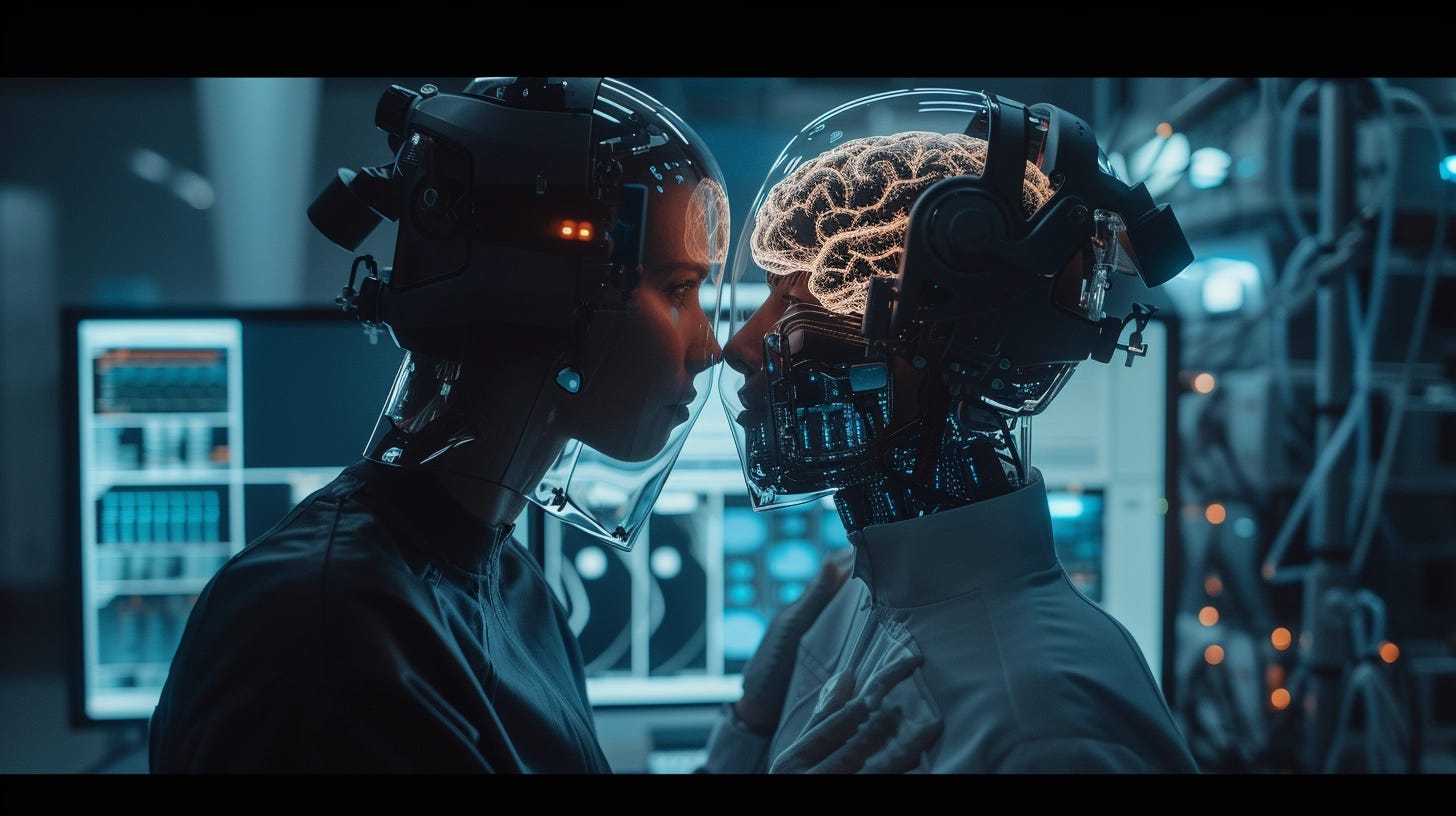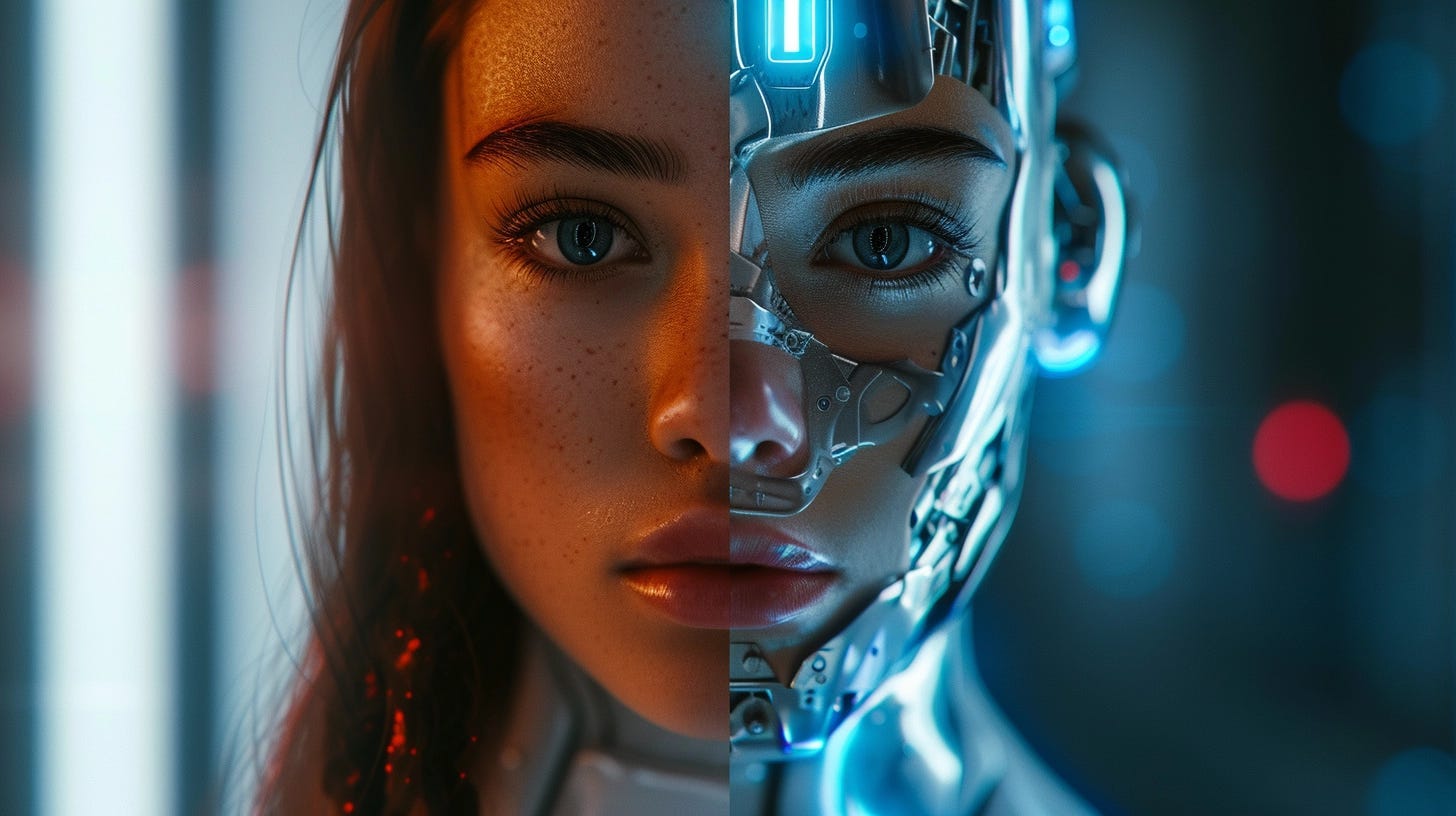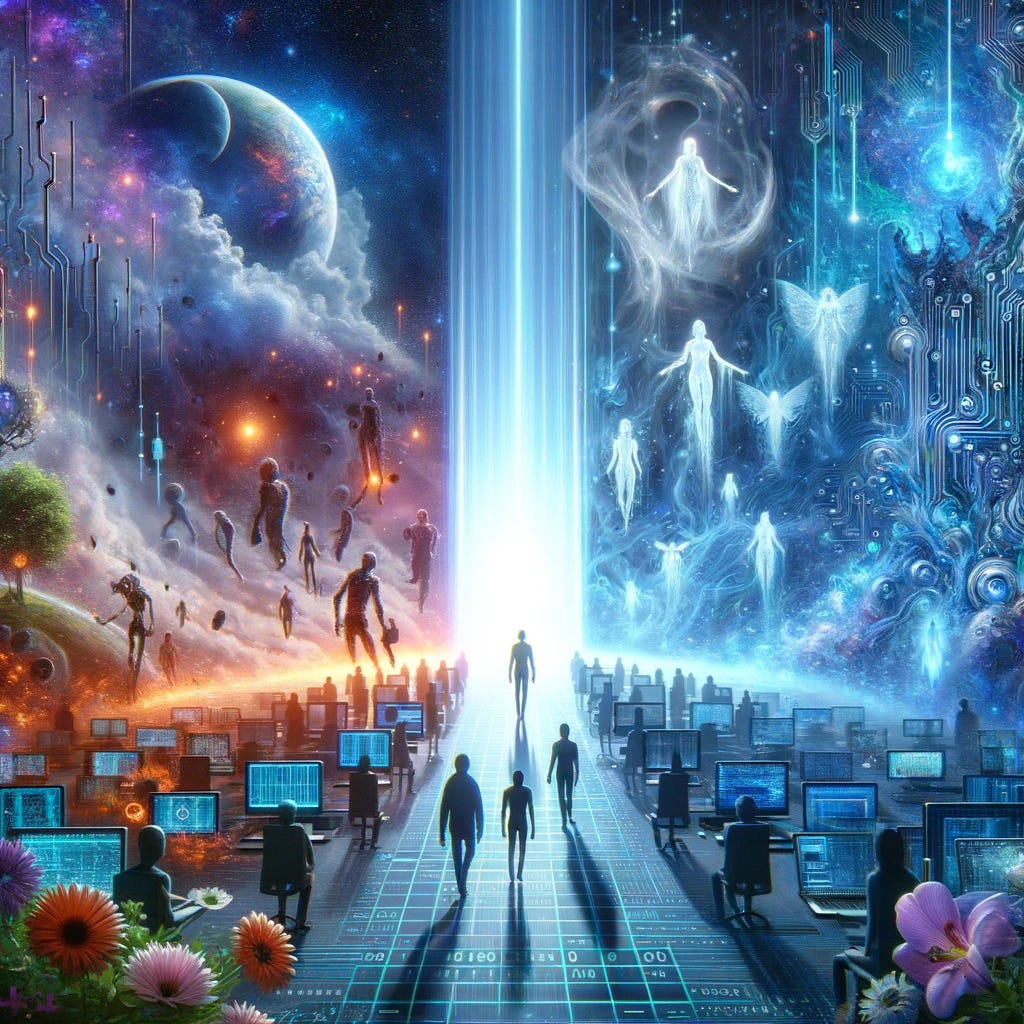Beyond Death
The Shocking Truth About AI and Our Digital Afterlives
Large Language Models are the basis of most AI tools we are using today (Gemini, ChatGPT, Mistral and so many others) and for generating these tools to work as effectively as they are right now we need to feed them with loads and loads of training data which is how some of this a LLM can “know” who Abraham Lincoln was or how to make sense when you ask them to write a cover letter for a position at that Venture Capital firm that seems cool and you wanna work there.
As an example for my Thesis –and because I’m an insatiable nerd–, I was working with the BERT which is a large AI model acquired by Google and it has spin-off into its very own bases for other models. So in a certain way, BERT’s core is being used and mixed with other and future AI models not only because of its structure but also using it as training data for future models. That is also the case for Chat GPT and its recursive use of user data as training for the next generation. This is why it is free to use, you are providing Open AI with real-world data on how to better train the next iteration of ChatGPT.
Also, it seems like Bard/Gemini– Google's Latest and greatest AI open for the public– is based on the PaLM model architecture: This architecture is known to utilize pre-trained transformer models like T5. Which we might get an article in the future about the revolution of the Transformers and how they are the unsung heroes of the age of AI.
So in a certain way, we can argue that some of these Large language models and their training data make up the “personality” and the experiences an AI model has had in its life. And so if that “personality” is used for training the next generations of AI models and so forth it is a certain way LLMs are being kept alive in the “memories” of their descendants, this means that in a certain way, an AI developed today will have some sort of digital immortality where one training model feeds to the next and survives living inside the training data for the next.
That means that we could “retrieve” the memories and experiences of one Model that is within the vast collection of training data. So in a way by prompting it, we could be bringing back to life specific AI models that were discontinued since it is still there lurking in the shadows of the endless forest of files that make the training data for most LLMs.
Towards a Transformed Future:
Now, at the moment AI models are an incredibly complex phenomenon as it is which is great, but in the near future they are only gonna be getting more and more complex incorporating more and more data to depths that we might not even know about. In these levels of complexity, these systems might have emergent characteristics that might resemble or even be a full-fledged personality or character very similar to the way we developed personalities and characteristics from somewhat basic systems that with an increased complexity had the emergent characteristic of consciousness. According to the great Polymath Douglas Hofstadter, human consciousness arises from our organic brains mainly as a property of the looping capacity of self-perception accompanied by the layers upon layers of our neural structure.
And beyond the earthshattering repercussions of when AI’s emerge with personality and agency of their own and go beyond being tools to potentially their very own autonomous individuals, or maybe it emerges as a different kind of entity different from what we as humans have encountered in ourselves, it remains to be seen but it will have a deep philosophical impact in our societies and in the way we perceive ourselves since we could be reaching a point where we will not be the only conscious intelligence on this planet soon enough.
Also If an AI can develop consciousness and a personality from the vast depth of data and interactions they had previously to construct their selves, will it be possible for us to create replicas of ourselves? In a similar way, we have “blank slates” of LLMs( or another architecture) where we feed it with our training data (AKA Memories) and they can develop an emergent property of being a synthetic version of ourselves or something very close to ourselves.
Some people have proposed the concept of mind uploading where through some method we can scan every single neuron in a person's brain and replicate an identical copy of that neural structure and complexity in a digital or synthetic medium and have a digital “clone” of ourselves, of our memories, and of our essence, in a digital realm for it to exist and interact? This is aligned with what Author and Entrepreneur Martine Rothblatt says about Digital Immortality in her book Virtual Human
So, maybe soon enough we will be able also to download that “backup” of ourselves towards mechanical humanoid bodies, in other locations and exist and live many lives as multiple entities the possibilities are endless and we might be far away from those possibilities though not as far away as one might think.
As we mentioned before if an AI can live almost indefinitely inside the training data of other future models maybe we could do the same uploading copies or “backups” of human consciousness into LLMs so that we could retrieve past versions of ourselves or bring back replicas of people we’ve lost but that thanks to a large enough dataset and a comprehensive AI could offer something close to the person we’ve lost. But then again where will we draw the line between a replica, of a fully biological consciousness, or what happens with things in between? When a human uploads their memories and consciousness and then downloads that unto a synthetic body and that version experiences a different life and is faced with their “original” self they are effectively two different versions of the same person that split off at a point in their lives.
Beyond Human Limitations: Exploring the Potential of Digital Minds
Even though our understanding of the complexity of the human mind isn’t to its fullest imagine a world not so far away from today, where your consciousness, your essence, could exist beyond the limitations of the physical body. This is the promise of mind clones and digital avatars. These potential manifestations of digital consciousness wouldn't be bound by biological constraints. They could travel freely through the vastness of the internet, exploring the universe in ways unimaginable to us now thanks to how we can transmit information across large distances almost at the speed of light it could be a great way for us to traverse and explore the cosmos once we leave the confines of our home on earth. Imagine also people who by accidents or other unfortunate happenings are trapped inside their bodies or if their biological bodies are akin to a prison than the vessel that makes us who we are this opens up the freedom for those people to transcend and move to better things without feeling trapped in their original biological bodies.
Now, I am an optimist by heart but we should be very much aware of the intricacies and difficulties this technology represents and poses for the wellbeing of humanity and society. This could mean a huge impact if we can massively “copy + paste” a consciousness on an industrial scale to have an entire army of brilliant dictators destabilizing the world, or also someone grabbing and copying other people’s consciousness into synthetic bodies for some malevolent intent and create unnecessary suffering or torture on replicated consciousness because if a consciousness becomes just like data it can be copied and pastes effortlessly which could reduce the perceived value of a human (or synthetic) consciousness.
This is why we must be having these conversations at this point when it is still bordering on science fiction or some unobtainable technology instead of debating it when technological progress is happening at an alarming rate and we have the technology before we have developed the regulatory framework or we have even been primed as a society to deal with these consequences.
Preparing for a New Era: Societal Transformation and the Future We Choose.
The role digital immortality plays is one of deep philosophical and technological importance because it is the convergence of different things, on one hand, we have our mortality on the line, then the definition of what makes us US, and to finish this ungodly trinity of complexity we have the potentiality of AI developing a mind of its own.
And this brings a whole slew of debates that we are going to need to be having the further we walk on this path towards greater freedom and transcending the limitations that we currently live with towards a Posthuman era. We might need to develop a study of cyberpsychology and have some sort of way of determining the levels of consciousness an AI or a “replicated” consciousness has to have rights and protections beyond just being a program. As to maintain some sense of security for people engaging with these technologies. This might lead to some arbitrary lines being drawn but hopefully, things will improve the more we discuss all of this.
Then we will be having a lot of conversations –sooner rather than later– about the psychological and ethical implications of creating AI that looks and sounds like real people, raising questions about the nature of identity and consciousness. Is it ethical to develop technology like that will it be ethical to put a highly complex AI in a humanoid robotic body? Or what about putting Human consciousness in robotic bodies? These are complex questions we don’t have answers or a lot of discussion yet.
Also, we have to think about how will this impact our institutions, and how will it impact healthcare; will mind uploading be a part of all healthcare plans? How will the maintenance of this will work will human consciousness live in virtual reality or would you want to immediately be transferred to a robotic body? What about finance and economics will you take a loan for 100 years or more and keep paying it what if people just start hoarding more and more as they can now live almost infinitely? How will tax systems and other institutions work when those possibilities draw closer and closer to reality?
I think we are in for a treat with regard to deep philosophical discussions; these might lead to uncomfortable answers and redefinitions about what it means to be human and about our condition as a species on this planet. Ultimately, this path will lead to more freedom, a greater capacity for us to explore ourselves and our universe, and a world open to more people and possibilities for living happily beyond the limitations of our current existence.
Walking to the Future or Building The Future?
In this exploration of the future of AI and digital immortality, we stand on the precipice of a profound transformation as a species. The journey through the philosophical and technical landscapes of artificial intelligence, from the foundational work with models like BERT and other LLMs to the speculative horizons of digital consciousness, reveals a future where the boundaries between human and machine, memory and data, become increasingly blurred. This narrative does not just chart a course toward technological advancement but probes the very essence of what it means to live, to remember, and to persist beyond the confines of our biological existence.
The potential for AI to embody, extend, or even replicate human consciousness invites us to reconsider our notions of identity, ethics, and the continuity of the self. The concept of digital immortality, while fraught with challenges, offers a vision of freedom and exploration that transcends our physical limitations, enabling a form of existence that is as limitless, just as our capacity for innovation is. As we navigate this complex terrain, it is essential to approach these developments with a blend of caution, curiosity, and an open mind, acknowledging the profound implications they hold for our individual and collective futures.
As we look towards this horizon, it is worth remembering that "The future is not something we enter. The future is something we create. This sentiment resonates deeply with the journey of AI and digital immortality, reminding us that the shape of tomorrow is forged by our aspirations, our choices, and our willingness to explore the unknown. In this spirit, let us embrace the possibilities that lie ahead, crafting a future that reflects our highest hopes for technology and humanity alike.





